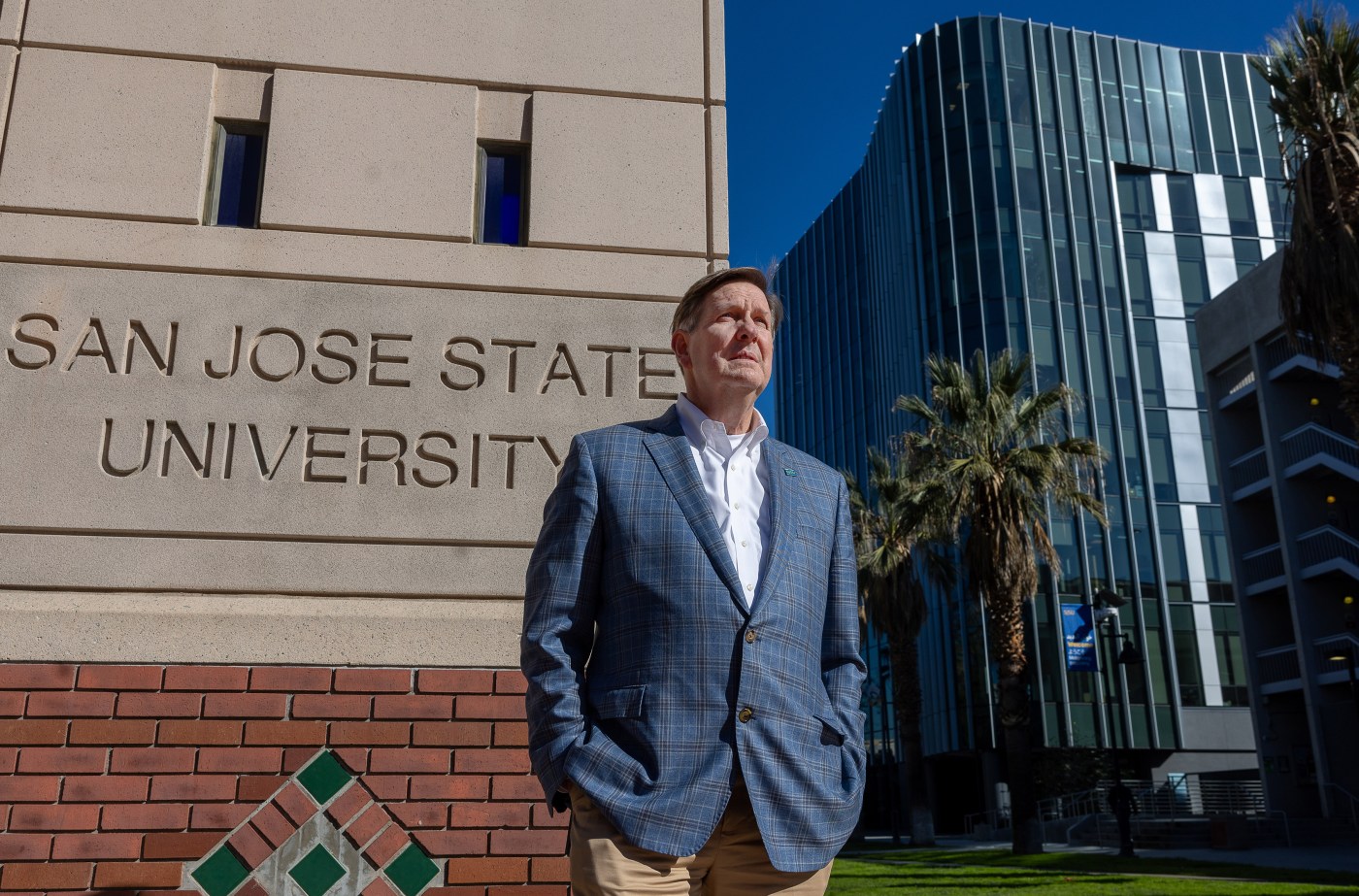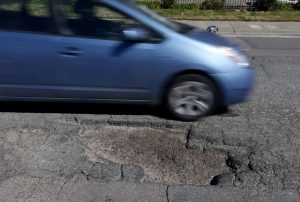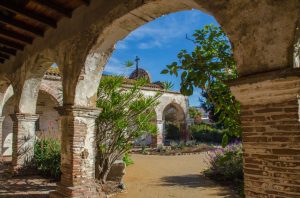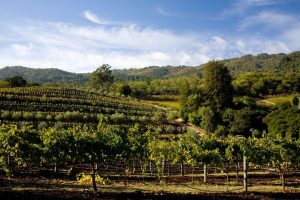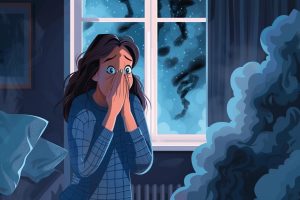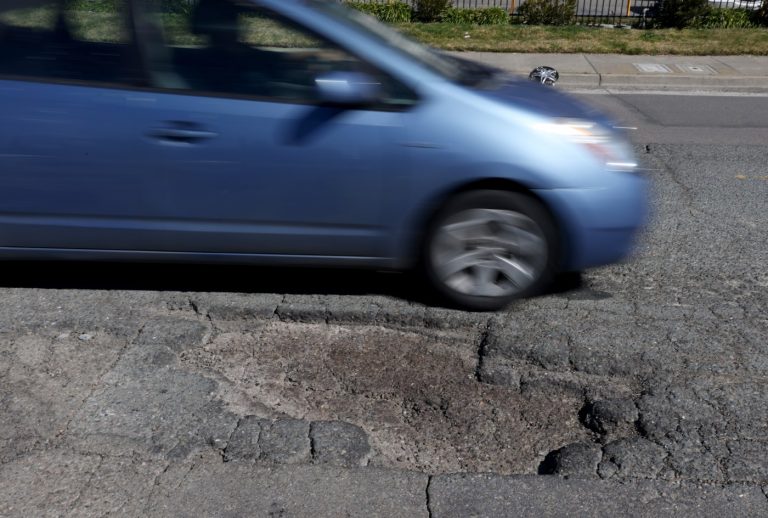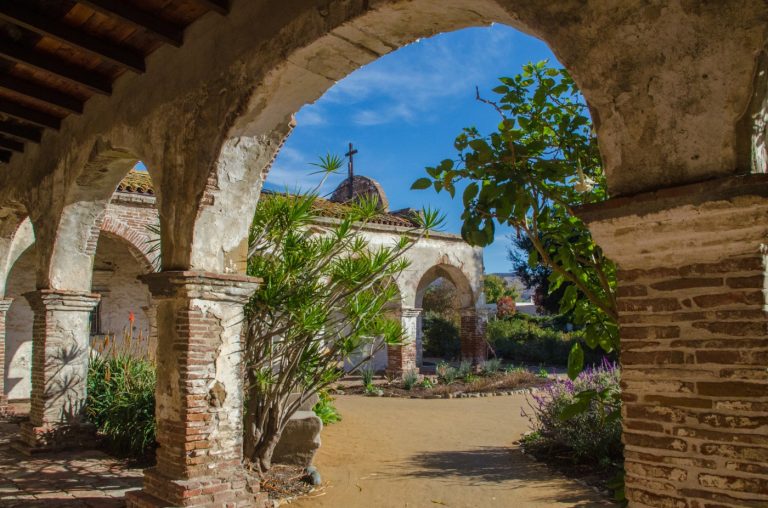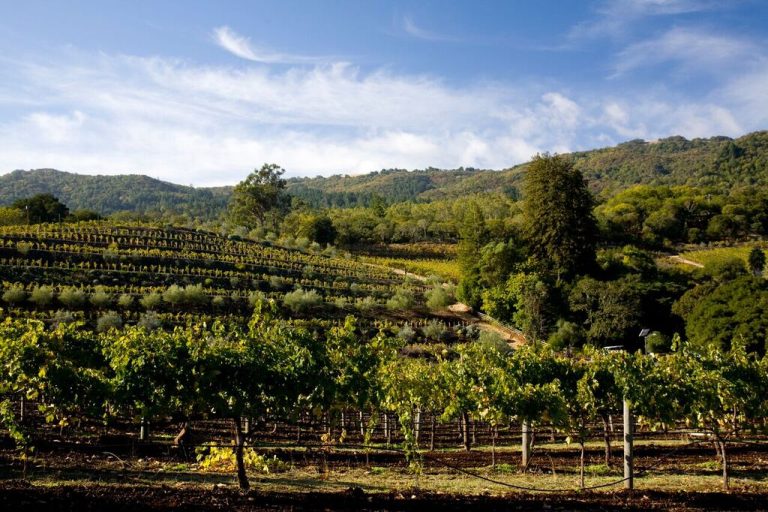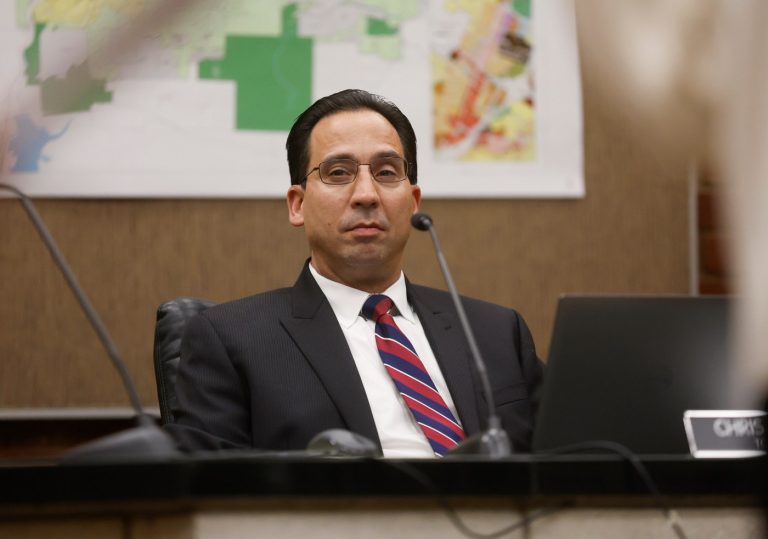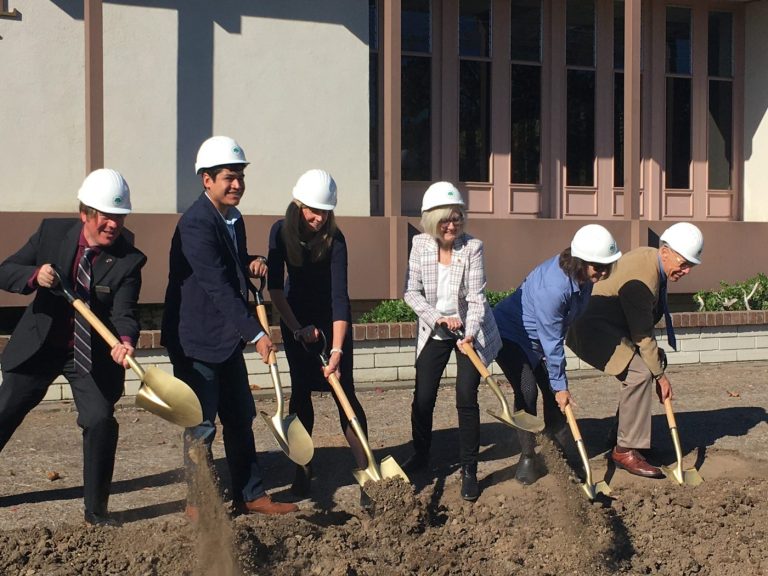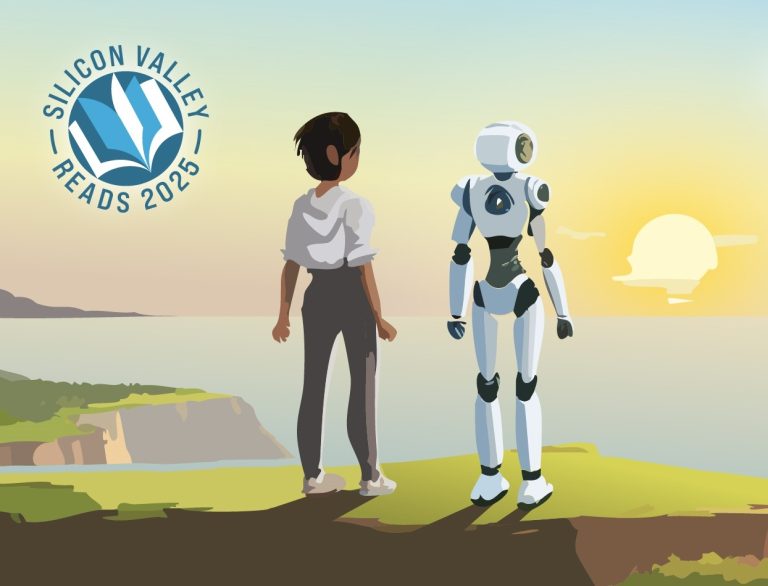SAN JOSE — The official title Charlie Faas held at San Jose State University — vice president for administration and finance — revealed only a small portion of his impact.
Faas, who recently left the university, was a prime mover in a remarkable stretch of accomplishments that fully integrated the school into downtown San Jose.
Charlie Faas, former vice president of administration and finance for San Jose State University, stands in front of the school’s Interdisciplinary Science Building. (Karl Mondon/Bay Area News Group)
A gleaming new science building, an ultra-modern athletics hub at the university’s South Campus, plans to transform an old state building into housing, and an out-of-the-blue conversion of a hotel tower into new student housing are among the dramatic initiatives Faas spearheaded.
“The vision is for the campus to be an integral part of downtown San Jose,” Faas said in an interview with this news organization.
Charlie Faas, former vice president of administration and finance for San Jose State University, stands in front of the SJSU Interdisciplinary Science Building. (Karl Mondon/Bay Area News Group)
Faas took over as vice president for administration and finance in 2016 and left that post on Jan. 31 for a similar role at St. Mary’s College in Moraga. Observers who know Faas say he ushered in profound and beneficial changes at San Jose State.
Related Articles
Trump delivered on his promise to order a ban on transgender female athletes. What’s next?
Trump’s Education Department to investigate SJSU over transgender volleyball player
SJSU responds to Trump’s order banning transgender women from women’s sports
Trump’s gender executive order a ‘full erasure’ on transgender rights, Bay Area advocates say
Jeanne Wakatsuki Houston, Santa Cruz author who chronicled Japanese internment experiences, dies at 90
“Charlie is a doer and a constructionist,” said Dean Munro, chief of staff to former San Jose Mayor Tom McEnery. “He wanted to move San Jose State forward. He did that.”
The various endeavors forged a vibrant bond between the university and downtown, which bolstered San Jose’s overall economy. The Wall Street Journal ranks SJSU as the nation’s No. 4-ranked public university.
“San Jose State is an economic powerhouse,” Faas said.
Notable SJSU sites have sprouted beyond the main campus and raised its visibility.
“The university is getting tentpoles all over the downtown,” said Barry Shiller, a former associate vice president for communications with SJSU. “San Jose State is an urban university right in the heart of one of America’s biggest cities.”
On the campus proper, Faas led the development of the Interdisciplinary Science Building near the corner of South Fourth Street and San Carlos Street.
“SJSU hadn’t built an academic building on the campus for some 30-odd years,” Faas said.
Yet even before the science tower could be built, the university had to accomplish a deft maneuver.
“We had to pick up Scheller House and move it,” Faas said.
The historic residence built in 1904, now nestled on South 10th Street, is the SJSU Associated Students House.
As a result of the move, an eye-catching science building has sprouted and is being used as a hub to train students in chemistry, biochemistry, cell biology, microbiology, wildfire research and machine learning to aid medical treatments.
“It’s a stunning, gorgeous building,” Faas said. “It’s just right for the students. It has labs, collaborative spaces, teaching spaces.”
About 10 years ago, the South Campus, in the vicinity of South 10th Street and Alma Avenue, was a somewhat ramshackle spot for the university.
“There was a lot of blight,” Faas said. “It was pretty run down. For football games people used to park where the soccer pitch is now. The South Campus used to be a complete train wreck.”
Entry area of Spartan Athletics Center on the San Jose State University South Campus near 1257 South 10th Street in San Jose, 2023. (George Avalos/Bay Area News Group)
For many years, the stadium where the Spartans played was by far the major component of the South Campus.
Now, the South Campus is far more than CEFCU Stadium. The complex boasts beach volleyball courts known as Spartan Beach, a baseball practice field, a softball field, a golf complex, a soccer field, a tennis complex and a new parking garage.
“The transformation of the South Campus has been nothing short of amazing,” Faas said.
The $70 million Spartan Athletics Center, which opened in 2023, is a dramatic new addition. The complex, which connects seamlessly to CEFCU Stadium, is also poised to be instrumental for an emerging “family entertainment district” near downtown San Jose.
“The South Campus master plan would not have been completed without Charlie’s drive and his vision,” said San Jose Sports Authority Executive Director John Poch. “Charlie has always been community-centric. What is best for all rather than what is best for one.”
In 2020, SJSU and the city of San Jose struck a deal whereby the university would operate the Hammer Theatre for at least 15 years until 2035. The city and the university can also extend the lease for another 20 years, which could enable the school to operate the 528-seat performance venue until 2055.
The plan to bulldoze the old Alquist State Building and transform the site into a residential highrise to house university workers, faculty and graduate students is another major initiative that Faas started.
Potentially, 1,000 people could live in the tower. However, the timeline for construction and occupancy has yet to be sketched out.
Much of what San Jose State has done for the last several years under Fass’ guidance could be viewed as more than just an enhancement for the school. The efforts frequently increase the vibrancy of downtown San Jose.
An exterior view of Spartan Village on the Paseo, a new student housing tower for San Jose State University students, August 2024. (Dai Sugano/Bay Area News Group)
Charlie Faas, a former official with San Jose State University, and a prime mover behind key development initiatives for SJSU, stands at an entrance the university’s (Karl Mondon/Bay Area News Group)
That appears to be the case with a downtown tower that has been converted from a hotel highrise into student housing.
In 2023, Bay Area real estate firm Throckmorton Partners struck a deal to buy the southern tower of the Signia by Hilton hotel – converting luxury hotel rooms into residences. The 13-story tower, Spartan Village on the Paseo, can accommodate roughly 700 beds.
With the deal, more than 800 students were brought into the heart of the downtown, creating more foot traffic and activating key stretches of the city’s urban core.
Shiller remembers that when SJSU was seeking candidates to fill the post that Faas eventually landed, Shiller took note that Faas’ background was more community-oriented rather than academic.
“Charlie knew the town, he knew the players,” Shiller said. “He asked why wasn’t the university a bigger part of the community, why wasn’t it more engaged.”
Faas recalled attending a meeting about development activity near the Diridon train station several years ago. During the gathering, a map was displayed showing the downtown and its environs.
“The downtown was one color and all the other parts near the downtown were a different color, including San Jose State,” Faas said. “I asked, ‘Why isn’t the university part of the downtown?’ The school is all blocked off. They didn’t see SJSU as part of the downtown.”
Faas said area leaders, such as San Jose Mayor Matt Mahan and prominent local developer Gary Dillabough, are helping to highlight how vital SJSU is to the city’s downtown.
“Matt Mahan is a massive supporter of San Jose State,” Faas said. “Gary Dillabough has been beating the drum for the university.”
The result has been nothing less than a sea change in how SJSU’s economic impact is perceived.
“In years past, the university was not even on the city’s maps of the downtown. City officials did not think of the university as important to the downtown,” Faas said. “Now SJSU is part of those maps.”
